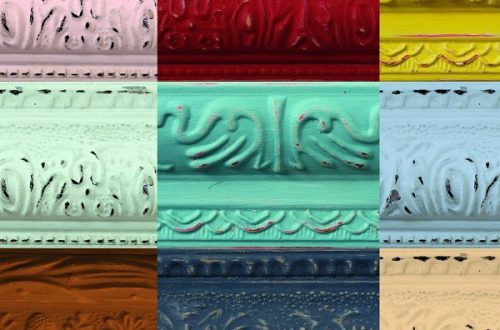For aspiring artists, the world of pastels offers a vibrant and versatile medium. Yet, choosing between soft pastels and oil pastels can be a challenge. Both boast a delightful immediacy and rich colors, but their unique characteristics lead to distinct artistic effects. This guide delves into the key differences between soft pastels and oil pastels, empowering you to select the ideal tool for your artistic vision.
Part 1: Composition – A Matter of Texture

Soft Pastels: The Delicate Touch
Soft pastels are known for their powdery texture, akin to chalk. This characteristic allows for effortless blending, creating smooth transitions between colors and a dreamlike, ethereal quality. They excel at capturing soft light and subtle atmospheric effects, perfect for landscapes, portraits, or capturing the delicate beauty of flowers.
Oil Pastels: A Bold Presence
Oil pastels are characterized by their firmer texture, resulting from the inclusion of wax and oil binders. This differentiates them from the softer consistency of other pastels. This unique texture allows for a more direct application. It leaves visible stroke marks that infuse the artwork with a sense of energy and vibrancy. The distinct strokes created by oil pastels add a dynamic quality to the composition, enhancing the visual impact of the artwork. This makes oil pastels well-suited for creating bold, expressive compositions. They are also ideal for rendering geometric shapes and capturing the intricate textures of weathered wood, rough surfaces, or other tactile elements. The medium’s firm texture lends itself to creating sharp edges and precise lines. This facilitates the execution of detailed work while also allowing for expressive and gestural mark-making. With their versatile and direct application, oil pastels offer artists a dynamic and engaging medium for bringing their artistic visions to life.

Part 2: Application and Blending – Mastering Control
Soft Pastels: Layering and Blending with Ease
The powdery nature of soft pastels is conducive to effortless blending. This can be facilitated by using your fingers, blending stumps, or even cotton swabs. This characteristic makes soft pastels ideal for creating seamless transitions and subtle gradations. It allows artists to layer thin washes of color to build depth and establish a sense of atmosphere within their artwork. Despite these advantages, the loose and powdery consistency of soft pastels can pose challenges when it comes to executing precise detail work. The medium’s propensity for spreading easily may require additional care and precision when working on intricate or fine details. It demands a deliberate approach to achieve the desired level of accuracy. Overcoming these challenges often involves refining one’s technique and developing a keen understanding of the medium’s behavior. This enables artists to leverage the unique qualities of soft pastels while effectively managing their inherent limitations.
Oil Pastels: Controlled Application and Selective Blending
While oil pastels can be blended, the waxy binders require more effort compared to soft pastels. This allows for greater control over the application and preservation of visible strokes. Utilize blending tools with caution, as over-blending can muddy the colors. Oil pastels excel at creating sharp lines and well-defined details, ideal for architectural drawings or still life compositions.
Part 3: Color and Light – Capturing Mood and Atmosphere

Soft Pastels: Subdued Tones and Atmospheric Effects
Soft pastels typically provide a more subdued and subtle range of colors compared to oil pastels. Their powdery nature often results in a muted palette, offering delicate and understated tones. This characteristic makes soft pastels perfectly suited for capturing the nuances of soft light. It also renders hazy landscapes and evokes a sense of serenity and tranquility within an artwork. The medium’s ability to convey gentle and ethereal tones adds a certain depth and sensitivity to the artistic representation. This allows for the creation of evocative and atmospheric pieces. Soft pastels excel in capturing the delicate interplay of light and shadow. They also convey a sense of quietude and introspection. For artists seeking to evoke a subtle and contemplative mood within their work, the subdued color range of soft pastels offers a compelling means of artistic expression.
Oil Pastels: Vibrant Hues and Bold Statements
Oil pastels are known for offering a richer and more vibrant color spectrum compared to soft pastels. Their waxy binders provide greater color intensity, allowing artists to create bold and striking statements within their artwork. The medium’s capacity for vibrant colors makes it well-suited for capturing the vivid hues of flowers, the fiery tones of a sunset, or the dynamic energy of a bustling cityscape. This heightened color intensity enables artists to convey dramatic and impactful lighting effects, enhancing the visual impact of their creations. Oil pastels excel in bringing out the vibrancy and intensity of the subject matter, infusing the artwork with a sense of dynamism and vitality. Their ability to capture the richness and brilliance of colors makes oil pastels an ideal choice for artists seeking to create visually compelling and attention-grabbing pieces that make a bold and vibrant statement.

Part 4: Experimentation and Creativity – Finding Your Artistic Voice
Embrace the Possibilities: Combining Techniques and Media
Don’t limit yourself to using just one type of pastel in your artwork. Embrace experimentation by combining both soft and oil pastels within the same piece. This allows you to leverage the delicate blending properties of soft pastels for creating subtle and nuanced backgrounds while utilizing the bold, vibrant strokes of oil pastels for foreground elements. By blending these two mediums, you can create a dynamic composition that offers a range of textures and visual depth. The combination of soft and oil pastels provides an opportunity to explore contrasts, achieving a unique visual impact that can enhance the overall appeal of your artwork. Embracing the versatility of both pastel types and understanding how they can complement each other opens up a world of creative possibilities, allowing you to produce stunning and multilayered pieces of art.
Practice Makes Perfect: Mastering the Art of Pastels

Developing your artistry with pastels takes dedication and experimentation. Begin by exploring the unique characteristics of each type through small studies. As you gain confidence, attempt larger artworks, pushing the boundaries of color, texture, and blending techniques to discover your own artistic voice.
By understanding the distinctions between soft pastels and oil pastels, you’ll be well-equipped to choose the right tool to bring your artistic vision to life. Embrace the unique properties of each medium, experiment with various techniques, and embark on a creative journey filled with vibrant hues, soft textures, and boundless possibilities.





